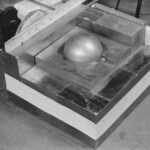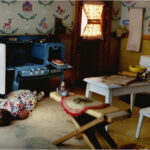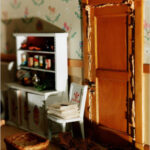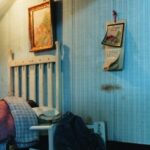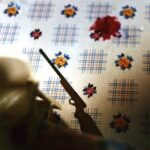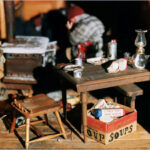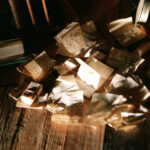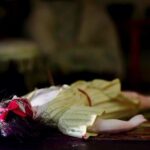Before Windscale, Three Mile Island, Chernobyl, and Fukushima, there was the Demon Core.
The Demon Core was a 6.2-kilogram subcritical mass of plutonium, which briefly went critical in two separate accidents at Los Alamos National Lab in 1945 and 1946. Each incident resulted in acute radiation poisoning and the subsequent death of a scientist. After the incidents, the spherical plutonium pit was dubbed the Demon Core.
On 21 August 1945, the plutonium core produced a burst of radiation that led to death of physicist Harry Daghlian. Daghlian was working alone, performing neutron reflection experiments on the core. The core was placed within a stack of neutron-reflective tungsten carbide bricks, and the addition each brick pushed the core closer to going critical. Daghlian was attempting to stack another brick on the pile when he dropped it on the core by accident. Despite his quick action to pull the brick off the assembly, Daghlian received a fatal dose of radiation and died 25 days later.
On 21 May 1946, physicist Louis Slotin and several others were conducting an experiment to verify the exact point at which a subcritical mass could be made critical by positioning neutron reflectors. It required the operator to place two half-spheres of beryllium, a neutron reflector, around the core to be tested and manually lower the top reflector over the core. Scintillation counters measured the relative activity from the core as the reflectors were moved closer and farther away from each other. The blade of a standard flathead screwdriver was necessary to keep the reflectors from closing completely around the core because it could result in instantaneous formation of a critical mass and a lethal power excursion. While lowering the top sphere, Slotin’s screwdriver slipped outward a fraction of an inch, and that was all that was needed for the top reflector to fall into place around the core. Instantly there was a flash of bright blue light and a wave of heat passed over Slotin’s skin; the mass had become supercritical, releasing a massive burst of neutron radiation. Slotin quickly knocked the two halves apart, stopping the chain reaction and saving the lives of his colleagues. He received a lethal dose of radiation and died 9 days later.
Tag: death cw
Today we step into the Archie McPhee Library to explore a macabre and fascinating book entitled The Nutshell Studies of Unexplained Death [Buy on Amazon] by Corinne May Botz, whose outstanding photos reveal one of the strangest and most significant tools in the development of modern forensic analysis: eighteen miniature, exhaustively detailed crime scene models built in the 1940s and 50s by pioneering criminologist Frances Glessner Lee (1878-1962). She called her models “Nutshell Studies” because, “the purpose of a forensic investigation is said to be to ‘convict the guilty, clear the innocent, and find the truth in a nutshell.’”
Glessner Lee was a grandmother in her 60s when she painstakingly created these dollhouse models, each of which is based on an actual homicide, suicide or accidental death. To help ensure accuracy she attended autopsies and made sure that even the smallest details of her models were correct. Clothing is appropriately worn out, pencils write, locks, windows, and lights all function, whistles blow, and mice inhabit the walls. These astonishing models were (and still are!) used to train detectives on how to asses visual evidence.
Corinne May Botz’s lush color photographs lure viewers into every crevice of Frances Lee’s models and breathe life into these deadly miniatures, which present the dark side of domestic life, unveiling tales of prostitution, alcoholism, and adultery. The accompanying line drawings, specially prepared for this volume, highlight the noteworthy forensic evidence in each case. Botz’s introductory essay, which draws on archival research and interviews with Lee’s family and police colleagues, presents a captivating portrait of Lee.
Frances Glessner Lee was also an heiress who used her considerable fortune to found Harvard’s department of legal medicine, the first forensic pathology program in the nation. In 1943 she was appointed an honorary Captain in the New Hampshire State Police. She was the first woman in the United States to hold that rank.
It’s a dark topic, to be sure, but this beautiful book is an intimate and utterly captivating look at the work of a truly remarkable woman and one of the most important figures in the development of modern forensic analysis.
[Images via the New York Times and The Nutshell Studies of Unexplained Death]
